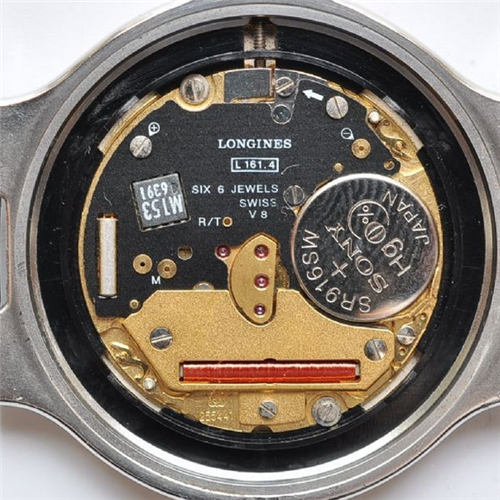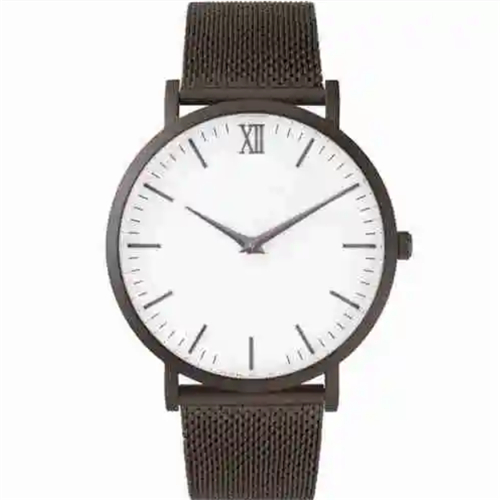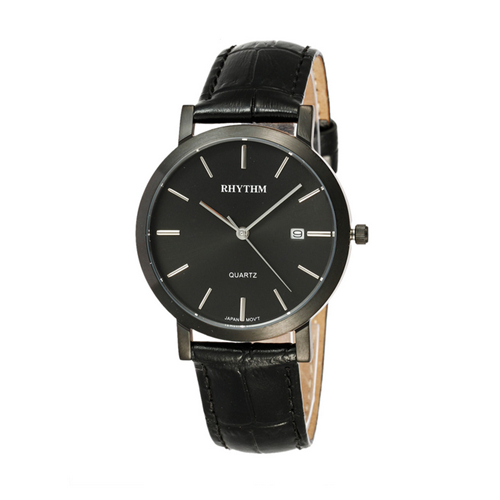
While watches differ greatly in style, genre, and function, they can generally be classified into two broad categories based on their internal movements: mechanical watches and quartz watches, with some exceptions. In this article, we will explore these types further.
Mechanical Watches can be subdivided into two primary types: manual winding, where the user must regularly wind the crown to keep the watch running, and automatic winding, where the mainspring is wound by a rotor that spins with the natural movements of the wearer's wrist.
Manual Movement
Manual winding movements, also known as manual mechanical watches, are one of the earliest types of watch movements. The mainspring is wound by manually rotating the crown, after which the watch starts to tick. Typically, a manual winding movement requires winding every 24 hours. Despite its history dating back to the pocket watches of the 15th century, this movement is still used by some high-end brands today. However, the need for regular winding can be a drawback, as many wearers may forget, causing the watch to stop running.

Automatic Movement
Automatic winding movements utilize the wearer’s wrist movements to wind the mainspring, eliminating the need for manual operation. The rotor rotates as the wearer moves, gradually tightening the mainspring and driving the watch. This type of movement is now widely used in most mechanical watches. As long as the watch is worn daily, it will continue to run, and the evenly wound mainspring can even improve timekeeping accuracy.

Quartz Movement
Quartz movements, which emerged during the quartz crisis of the 1970s and 1980s, had a significant impact on the Swiss watchmaking industry, leading to the collapse of many traditional mechanical watch brands. Invented by W.A. Marrison in the 1920s and mass-produced by Seiko in 1969, quartz movements quickly became the consumer’s first choice due to their low cost, accuracy, and wide range of functions. The quartz movement operates using a quartz oscillator as a timekeeper, powered by a battery. Quartz movements are particularly popular in women's watches as they are thinner and have an appealing appearance.

Movements produced in-house by brands can be either manual or automatic winding types. The critical components of these movements, such as the main plate and bridges, are independently produced by the brand. As a result, brands can name their movement models themselves. For instance, ETA movements under the Swatch Group were once the primary supplier for major brands, but after the Swatch Group stopped supplying ETA movements externally in 2002, many brands began producing their own movements.
Watch Styles:
Watches, as one of the accessories people wear daily, not only serve to display time but also reflect a person’s lifestyle and personality. According to design and use, watches can be divided into the following common styles:
Minimalist watch
Minimalist watches are characterized by simplicity and elegance. The dial design is straightforward without excessive decorations or complex functions. These watches suit those who prefer a low-key and simple style, offering a fashionable yet understated look.

Sport watch
Sport watches are known for their practicality and durability, often featuring stainless steel cases and rubber or nylon straps. These watches are suitable for those who love sports and seek an active lifestyle, offering comfort and functionality.

Business watch
Business-style watches exude maturity and sophistication. The dial design is simple and elegant, with leather or metal straps. These watches are ideal for professionals, highlighting a mature and steady demeanor.

Casual watch
Casual watches emphasize a relaxed and laid-back style, with diverse dial designs and straps made of leather or canvas. These watches are suitable for those who value comfort and individuality, offering both style and ease.

Vintage watch
Vintage watches are marked by classical elegance, often featuring round or square dials and leather or metal straps. These watches are perfect for those who appreciate historical charm and sophistication, offering a timeless and captivating appeal.

Luxury watche
Luxury watches are characterized by their opulence, often featuring dials adorned with diamonds, gemstones, and other high-end materials, along with metal straps. These watches cater to those who favor a lavish and prestigious lifestyle, highlighting status and refined taste.

Fashion watche
Fashion watches are trendy, stylish, and represent a taste for cutting-edge fashion. These watches are ideal for young people who pursue style and individuality.

Moissanite watch may be the most cost-effective choice
When it comes to luxury watches, moissanite timepieces have recently gained popularity due to their brilliant sparkle and affordability compared to traditional diamond-studded watches. Moissanite is a gemstone known for its exceptional brilliance, outshining even diamonds in terms of fire and radiance. As more consumers seek sustainable and budget-friendly luxury options, moissanite watches are becoming a go-to choice for those desiring elegance without compromising ethical standards.

Luxury moissanite watch are crafted with precision and often come in stunning designs that feature intricate details, premium metals, and, of course, the eye-catching brilliance of moissanite stones. These watches are not only visually striking but also durable, making them perfect for daily wear or special occasions. The combination of modern aesthetics with high-quality craftsmanship ensures that moissanite watches are not just a fashionable accessory but also a long-lasting investment.
Whether you are seeking a watch that exudes luxury or one that aligns with contemporary values of sustainability, a moissanite luxury watch offers both. With their growing presence in the luxury market, they provide a unique blend of elegance, innovation, and ethical appeal, making them a top choice for discerning watch collectors and enthusiasts.





















